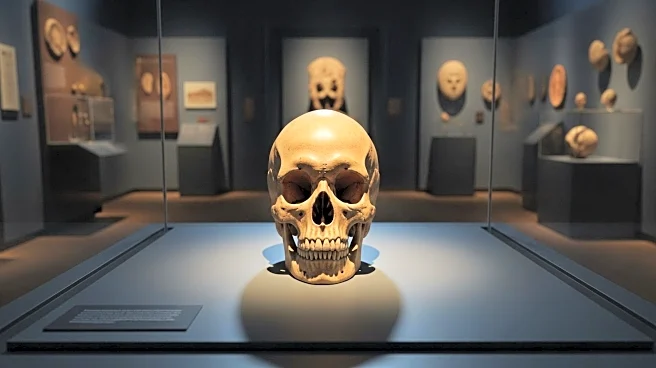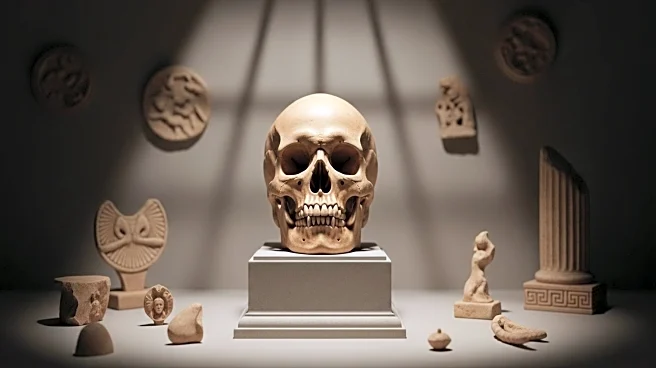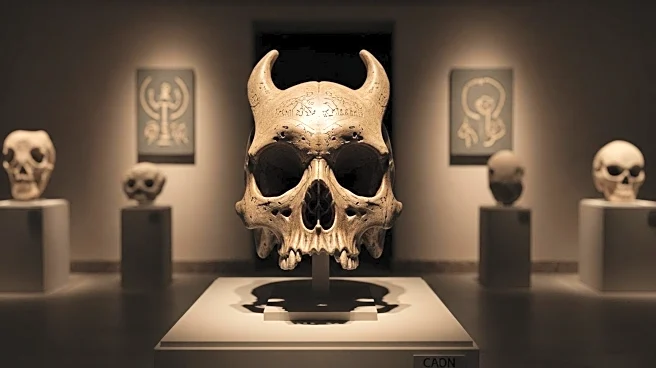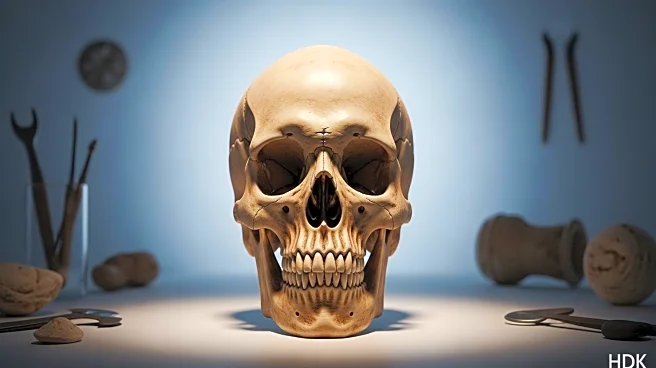What's Happening?
A recent study has provided new insights into the age and significance of the Petralona cranium, a crucial human fossil discovered in northern Greece over sixty years ago. Researchers from France, China, the UK, and Greece employed advanced uranium-series dating techniques to determine that the skull is at least 286,000 years old, placing it in the Middle Pleistocene era. This finding resolves previous conflicting age estimates that ranged from 170,000 to nearly 700,000 years. The Petralona cranium, nearly complete and distinct from both Neanderthals and modern humans, is often associated with Homo heidelbergensis, a species considered the last common ancestor of Neanderthals and modern humans. The study, published in the Journal of Human Evolution, suggests that the skull belonged to a primitive human population coexisting with emerging Neanderthals.
Why It's Important?
The confirmation of the Petralona cranium's age has significant implications for understanding human evolution in Europe. It challenges previous assumptions about the fossil's discovery and suggests that archaic populations related to Homo heidelbergensis were present in southeastern Europe as recently as 300,000 years ago. This discovery highlights the complex and branching nature of human history, with different populations existing side by side rather than following a linear progression. The findings contribute to a deeper understanding of the interactions between various human species and their evolutionary paths, offering a more nuanced view of human prehistory.
What's Next?
The study opens new avenues for further research into the fossil record and human evolution. Scientists are expected to continue exploring the implications of the Petralona cranium's age and characteristics, potentially leading to new discoveries about the coexistence and interactions of ancient human populations. The research may also prompt reevaluation of other fossils and archaeological sites in Europe, contributing to a broader understanding of human evolutionary history.
Beyond the Headlines
The discovery of the Petralona cranium's age not only reshapes the timeline of human evolution but also raises questions about the ethical and cultural dimensions of fossil research. It underscores the importance of using advanced scientific techniques to resolve historical debates and highlights the collaborative efforts of international researchers in uncovering human history. The study may influence future approaches to fossil dating and the interpretation of archaeological findings.












